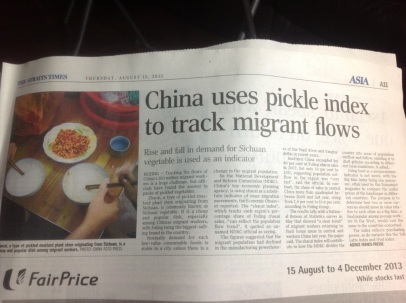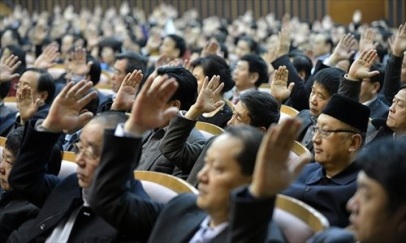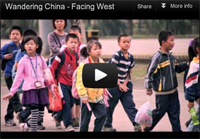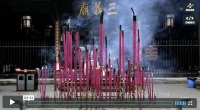Xinhua: A peek into China’s domestic well-being.
Its Golden Week (黄金周) is a semi-annual 7-day national holiday, implemented in 2000. Designed so that three days of paid holidays are wrapped around surrounding weekends to boost its domestic tourism market and improve standard of living across the board, this measure underlies the importance the Chinese attribute to allowing people to make long-distance family visits.
That said however, China still boasts one of the lowest statutory minimum employment leave allowances in the world pegged to work experience- 5 working days (from 1 to 9 years seniority), 10 working days (from 10 to 19 years), 15 working days (from 20 years and beyond).
Australia where I am is generous in comparison with 4 weeks standard, plus 10 public holidays, and 5 weeks for shift-workers. Singapore where I was born saw 14 as a standard.
Underscoring this of outward symphony of movement of course, is its extensive and still-expanding affordable transport network boosting its arterial push outwards from the East coast. It’s not quite there yet (see China Golden Week Chaos on Global Voices), as the Chinese flock en-masse to favoured spots coveted in collective cultural memory – but at least this is an inside look at what China is doing, with a look at efficacy, in its desire for equitable wealth for this five-year plan.
Back in 1999 when it was first mooted, an estimated 28 million Chinese travelled. Eight years later in 2007, the number jumped five-fold to about 120 million. This year, thanks to the longest ever Golden Week due to the Mid-Autumn Festival and the National Day holiday, the numbers are booming in this second half a semi-annual covenant between the central government and its populace. Interesting food for thought on what is largely perceived as an authoritarian top-down structure – allowing its 1.3 billion citizens to take two blocks of 7 days of continuous leave annually.
For a self-reflexive piece on the woes caused by such a huge volume of movement and in particular that long-lasting economic incentives remain absent to sustain the world’s second biggest economy, check out Holiday travel reveals weal and woe in China’s consumption(Xinhua, October 7, 2012).
– – –
China’s tourism industry reaps golden harvest
No author indicated
Source – Xinhua, published October 7, 2012

Tourists visit the Confucius Temple in Nanjing, capital of east China’s Jiangsu Province, Oct. 1, 2012. China’s “Golden Week” holiday justified its title with a rise in tourism revenue, National Tourism Administration (NTA) statistics showed Sunday. The country’s 119 major scenic spots received a total of 34.25 million visitors during the eight-day holiday, up 20.96 percent from the corresponding period last year. Tourism income surged by nearly a quarter from 2011 to 1.77 billion yuan (278.39 million U.S. dollars), the NTA said. Photo – Xinhua, Wang Xin
Story Highlights –
• China’s 119 major scenic spots received a total of 34.25 million visitors during the eight-day holiday.
• Tourism income surged by nearly a quarter from 2011 to 1.77 billion yuan.
• Many scenic spots, including the Forbidden City, attracted record volumes of visitors.
BEIJING, Oct. 7 (Xinhua) — China’s “Golden Week” holiday justified its title with a rise in tourism revenue, National Tourism Administration (NTA) statistics showed Sunday.
The country’s 119 major scenic spots received a total of 34.25 million visitors during the eight-day holiday, up 20.96 percent from the corresponding period last year. Tourism income surged by nearly a quarter from 2011 to 1.77 billion yuan (278.39 million U.S. dollars), the NTA said.
The administration said many scenic spots, including the Forbidden City, attracted record volumes of visitors during the longest-ever “Golden Week” bridging the Mid-Autumn Festival and the National Day holiday. Read the rest of this entry »
Filed under: Beijing Consensus, Charm Offensive, Chinese Model, Culture, Domestic Growth, Economics, Environment, Government & Policy, Human Rights, Influence, Infrastructure, Mapping Feelings, Migrant Workers, Migration (Internal), Peaceful Development, People, Politics, Population, Public Diplomacy, Reform, Social, Soft Power, The Chinese Identity, The construction of Chinese and Non-Chinese identities, China's Rise, culture, Democracy, Economics, Environment, Politics, Public Diplomacy, Social


















The Sharing Circle